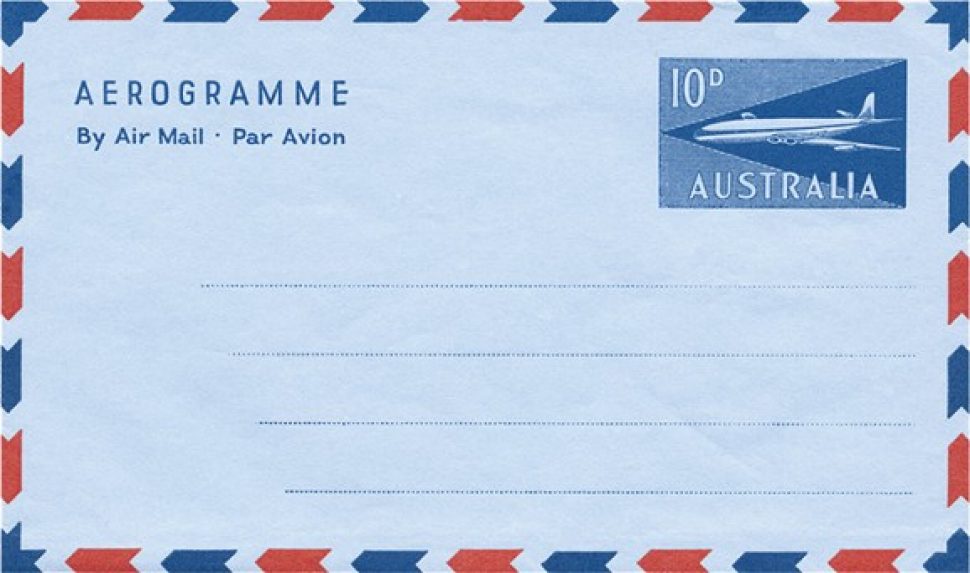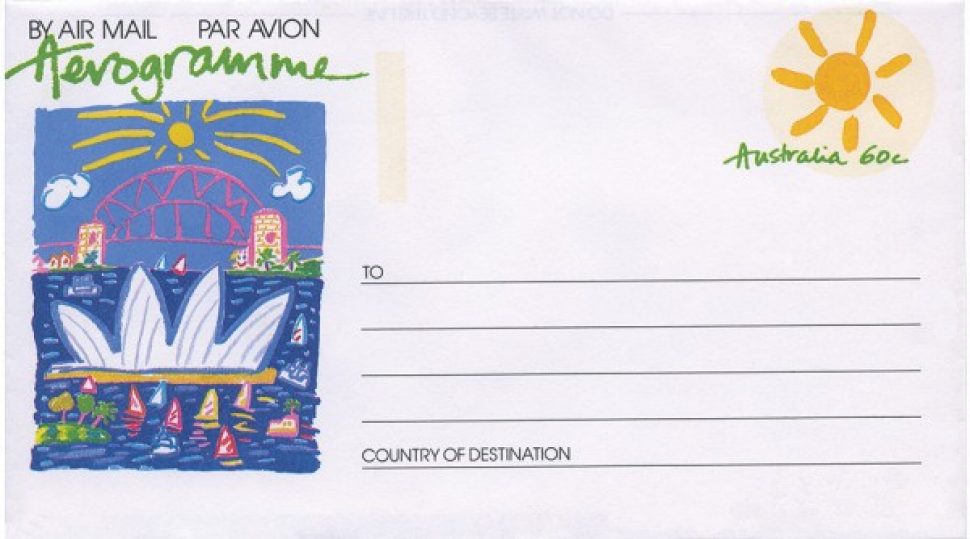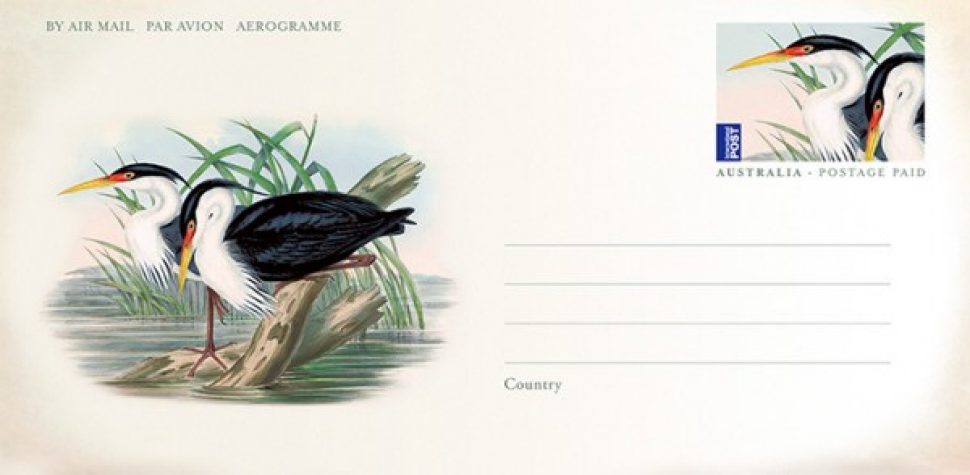The modern aerogramme essentially evolved from air mail letter cards and air letters used by military authorities, welfare organisations and some members of the armed forces just prior to and during World War II.
Air mail letter cards were developed in 1933 for use in in Iraq and British-mandated Palestine. James Mackay describes in his book, Airmails 1870-1970: “These items consisted of thin sheets of paper, with imprinted stamps and airmail labels. The sender folded the sheet to confirm in size and shape…and gummed flaps were provided for sealing the sheet.”
The inventor was an Englishman, Douglas Gumbley, who was Director of Posts to the Iraqi Government in the early 1930s. Interestingly, Australian forces, who were stationed in British-mandated Palestine during World War II, were able to use some of the air letter cards for sending correspondence home.
From 1941, Britain began to print special forms on light-weight paper for use by their military forces serving overseas. The idea was that by using a very light-weight letter, the mail to be taken overseas would not take up too much room on board military aircraft.
Based on a similar concept, Australia’s first air letter for public use was issued on 11 September 1944. The date coincided with the restoration of air mail services between Australia and England, which had been severed in early 1942 once Japan entered the war.
The first air letter featured an imprinted 7d (seven pence) King George VI stamp, which represented a considerable reduction over the 1s 6d (one shilling and six pence) postage for a half-ounce air mail letter. It consisted of blue printing and overlay on yellow paper.
Interestingly, as noted by Mrs J A Clayton in a paper read to the NSW Philatelic Society in 1964, the air letter was originally intended “For Letters to Members of the Forces Overseas” and so this statement was printed directly onto the air letter form. However, once released they were made available for unrestricted use, which meant this statement was simply crossed off using red pencil on the first batch.
The air letter service was continued after the war and it grew rapidly in popularity. By 1948, they comprised about half of all overseas air mail articles from Australia. By this stage, private aerogrammes were allowed. Organisations could print their own aerogrammes for stamps to be affixed, provided they accorded with the printing specifications for the Post Office’s aerogrammes.
“Air letter” changed to “Airletter” in 1945. “Airletter” became “Aerogramme” in 1953, as a result of a decision at the previous year’s Brussels Congress of the Universal Postal Union. The tri-coloured border design was introduced in 1954, and in 1959 the addition of an extra sealing flap meant an increase in the available writing area.
The first commemorative aerogramme was issued on 12 November 1956 for the Melbourne Olympic Games. The imprinted stamp features the Arms of the City of Melbourne.
Since then a variety of events and anniversaries have been featured, including the 1963 Royal Visit, the 40th anniversary of Qantas, in 1960, and the 1982 Commonwealth Games in Brisbane.
More recent commemorative issues include Aviation Feats in 1994 (featuring pioneering contributors to early Australian aviation) and the 2000 Sydney Olympic Games.
The first Christmas aerogramme was issued on 6 December 1961. The design comprised a blue replica of the Christmas stamp printed onto the aerogramme. Christmas aerogrammes were issued annually until 2012.
Following the transfer of stamp and postal stationery production from the Note Printing Branch in Melbourne to private sector printers in 1981, the limited use of colour in aerogrammes was replaced by designs featuring full colour illustrations.
Traditionally aerogrammes had been produced on blue-tinted paper, but to accommodate full colour designs aerogrammes use a white paper base. In 1989, for example, Australian artist and designer Ken Done illustrated four new full colour definitive aerogrammes, to accommodate the (then new) 60 cent airmail rate.
Commencing in 1993, the denomination for the aerogramme fee was replaced in the stamp image area by “Postage Paid”, which allows aerogrammes to remain on sale following a rate change.Aerogramme themes have spanned a range of Australian flora, fauna, pastimes and places of interest – from Shearing and Surf Board Riding in 1982 to Threatened Marsupials in 2001 and Waterbirds in 2009.
Aerogrammes are now issued on an ad-hoc basis, the most recent being the 2016 Art Gallery Aerogrammes and IPPEs, which will be released on 5 April 2016 and feature striking Indigenous artworks from the impressive State Art Collection at the Art Gallery of Western Australia.
This article was produced at the time of publication and will not be updated.








